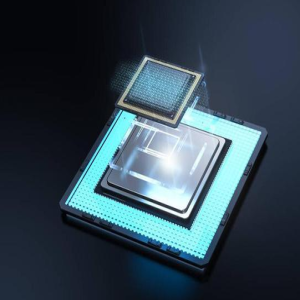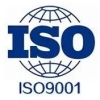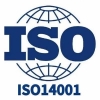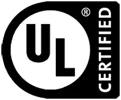Laser precision machining: the future and trend of intelligent manufacturing

Today, with the rapid development of the industrial field, laser precision machining technology has gradually become an essential manufacturing method. With the continuous development and changes of intelligent manufacturing, laser processing is changing the face of traditional manufacturing with its efficient, flexible and precise characteristics. The following is a good introduction to the basic principles, main applications, technological progress and its impact on intelligent manufacturing.
What is the basic principle of laser precision machining? It uses high-energy laser beams to cut, weld, mark and carve materials. The laser beam has a focusing property, which makes the energy density extremely high, so that the energy can be concentrated in a small area, so that the material can be precisely machined. There are many types of lasers, such as fiber lasers, CO2 lasers, solid-state lasers, etc., and different lasers have their own advantages in efficiency and quality when processing different materials.
During processing, the laser beam can be moved according to a pre-set path, which can meet the processing requirements of complex shapes and high precision. And laser processing can not only be used for metal materials, plastics, ceramics, glass and many other materials can also be processed, which greatly broadens its scope of application.
Let's talk about which areas laser precision machining is mainly used in.
In the automotive industry, laser welding is widely used in the body structure connection. Laser welded joint has high strength and small heat affected zone, which can improve welding quality and reduce production cost. In addition, in the cutting of body parts, marking the VIN code of the car, the advantages of laser processing are unmatched by other methods.
In the aerospace field, laser precision machining can meet the industry's requirements for high-strength, high-precision materials. Taking turbine blade processing as an example, the surface quality produced by laser technology is better, and the tolerance range is smaller, thus improving the overall performance and service life.
In the electronics manufacturing industry, lasers are often used to cut, punch, and encapsulate circuit boards. In the production of micro-electronic components, laser processing can achieve higher production efficiency, and the processing size can be smaller, which just meets the needs of modern electronic products.
The production of medical devices is also inseparable from laser technology. For example, when making heart stents and surgical instruments, lasers can make particularly precise cuts and welds, making the finished product safe and reliable.
In addition, in art design, laser engraving and marking technology is often used in art works and design products, which can accurately print complex patterns and text onto various materials, which also provides new possibilities for personalized customization.
Then talk about the progress of laser precision machining technology.
With the continuous development of science and technology, laser precision machining technology is also constantly changing. In recent years, the degree of intelligence of equipment has improved significantly. Just like a laser processing system that combines artificial intelligence and big data technology, it can monitor the processing process in real time and automatically adjust parameters to ensure that the processing quality is always stable. Through the integration and analysis of data, users can get real-time feedback, to timely adjust the production strategy, so that the resource allocation is more reasonable.
Laser technology itself is advancing. New lasers such as ultrafast lasers and green lasers are being developed and applied with higher pulse frequencies and shorter pulse widths to meet more complex processing needs. Especially in the field of micro and nano processing, the emergence of ultrafast laser technology has made it possible to process precision and quality that could not be achieved by traditional technologies before.
Finally, let's talk about the impact of laser precision machining on intelligent manufacturing.
The combination of laser precision machining and intelligent manufacturing is developing the manufacturing industry in a more efficient, flexible and intelligent direction. By realizing intelligent process control and management, not only the production efficiency is improved, but the production mode can also become more flexible. In this way, customized products can be quickly produced, and enterprises can quickly adjust production strategies according to changes in the market.
At the same time, laser processing can also optimize resource allocation in the production process. Because of its high efficiency and low loss, manufacturing enterprises can reduce production costs while saving raw materials. Laser precision processing technology is becoming more and more popular, will give birth to more new materials, new processes, and promote the innovation of the manufacturing industry chain.
The design of laser technology is becoming more simplified and modular, which makes it easier for small and medium-sized enterprises to use the technology. In other words, laser precision machining is no longer just the patent of large enterprises, more enterprises can participate in the trend of intelligent manufacturing, thus promoting the healthy development of the entire industry.
From a global perspective, the market demand for laser precision machining has been rising. According to the market research institute, the laser processing market is expected to continue to grow at a double-digit annual growth rate in the coming years. More and more industries are beginning to pay attention to the application of laser technology in the manufacturing process, and its potential economic benefits and technical advantages have attracted wide attention.
In general, in the context of intelligent manufacturing, laser precision machining technology is ushering in a good period of development. With the continuous progress of technology and the continuous expansion of the scope of application, the future laser processing will bring innovation and change to more fields.
您可能感興趣的產品
 |
62051-P2S02 | XFRMR TOROIDAL 15VA CHAS MOUNT | 3312 More on Order |
 |
62045-P2S02 | XFRMR TOROIDAL 10VA CHAS MOUNT | 2430 More on Order |
 |
62044-P2S02 | XFRMR TOROIDAL 10VA CHAS MOUNT | 6048 More on Order |
 |
62043-P2S02 | XFRMR TOROIDAL 10VA CHAS MOUNT | 5472 More on Order |
 |
62075-P2S02 | XFRMR TOROIDAL 35VA CHAS MOUNT | 7308 More on Order |
 |
62073-P2S02 | XFRMR TOROIDAL 35VA CHAS MOUNT | 5292 More on Order |
 |
70074K | XFRMR TOROIDAL 35VA THRU HOLE | 6840 More on Order |
 |
70072K | XFRMR TOROIDAL 35VA THRU HOLE | 5634 More on Order |
 |
70043K | XFRMR TOROIDAL 10VA THRU HOLE | 5562 More on Order |
 |
70041K | XFRMR TOROIDAL 10VA THRU HOLE | 2826 More on Order |
 |
70031K | XFRMR TOROIDAL 7VA THRU HOLE | 8658 More on Order |
 |
70024K | XFRMR TOROIDAL 5VA THRU HOLE | 8748 More on Order |
 |
70011K | XFRMR TOROIDAL 3.2VA THRU HOLE | 7560 More on Order |
 |
70003K | XFRMR TOROIDAL 1.6VA THRU HOLE | 2520 More on Order |
 |
70002K | XFRMR TOROIDAL 1.6VA THRU HOLE | 5040 More on Order |
 |
62015-P2S02 | XFRMR TOROIDAL 3.2VA CHAS MOUNT | 3780 More on Order |
 |
70025K | XFRMR TOROIDAL 5VA THRU HOLE | 4068 More on Order |
 |
70064K | XFRMR TOROIDAL 25VA THRU HOLE | 13758 More on Order |
 |
70034K | XFRMR TOROIDAL 7VA THRU HOLE | 8088 More on Order |
 |
70005K | XFRMR TOROIDAL 1.6VA THRU HOLE | 7218 More on Order |
 |
AC1200 | CURR SENSE XFMR 200A T/H | 2142 More on Order |
 |
AC1050 | CURR SENSE XFMR 50A T/H | 7362 More on Order |
 |
AC1010 | CURR SENSE XFMR 10A T/H | 5963 More on Order |
 |
AC1025 | TRANSFORMER CURRENT 25.0 AMP | 4230 More on Order |









